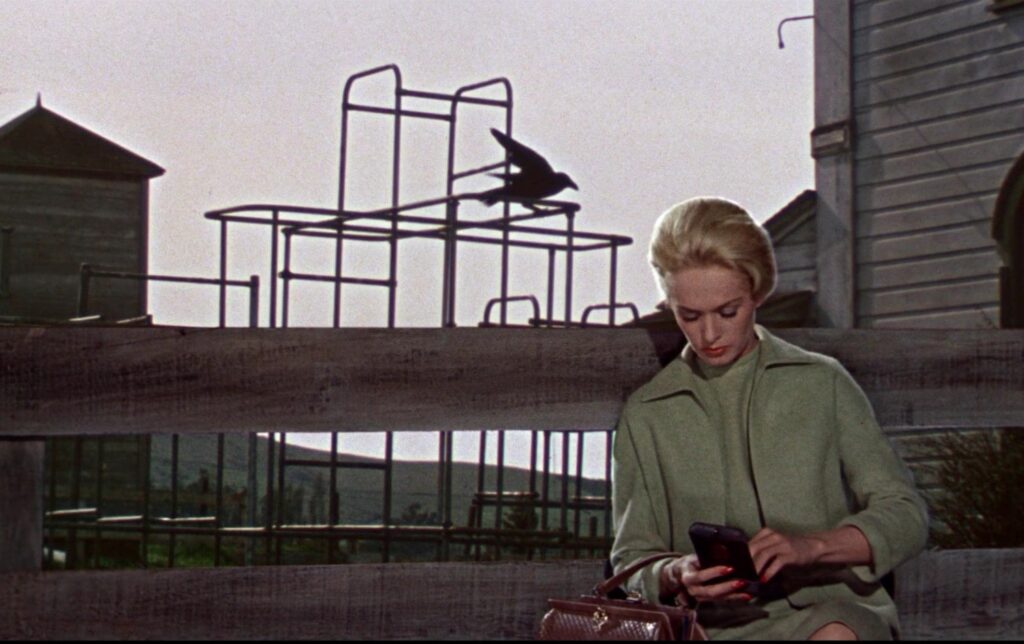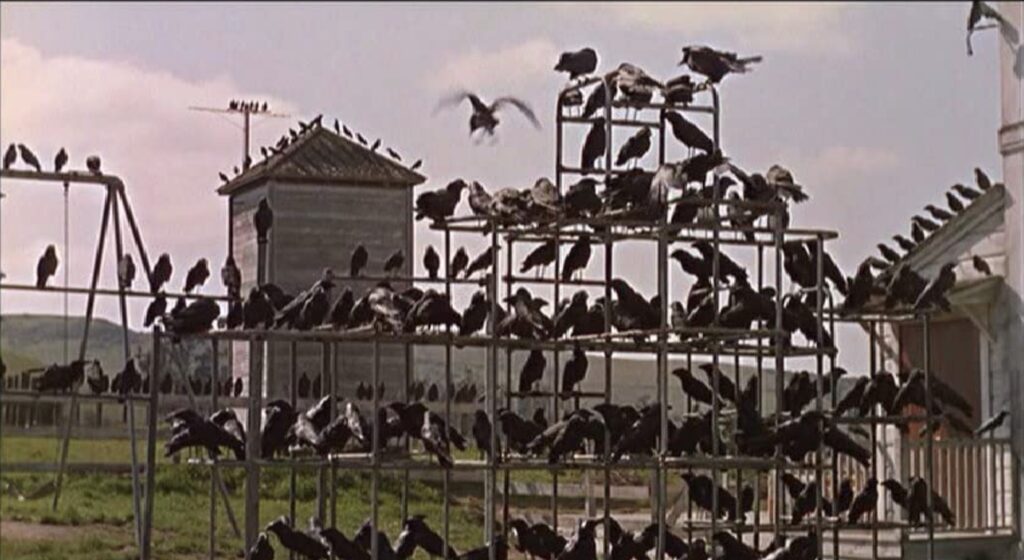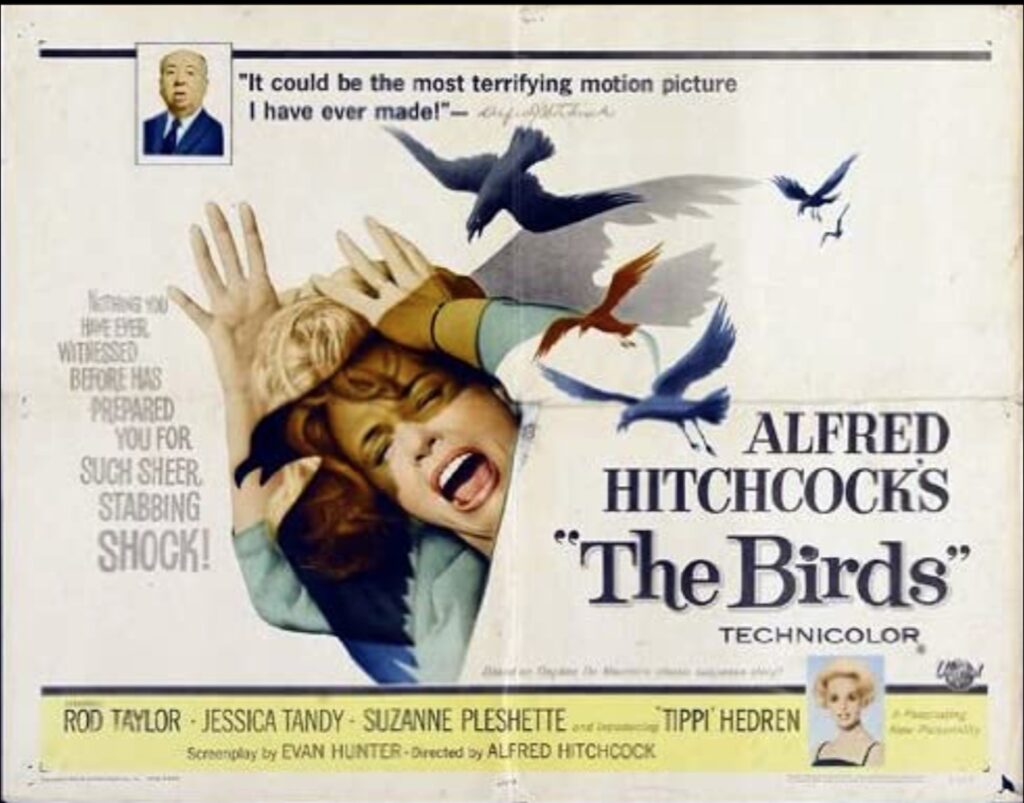The silence has eerie weight. At first it’s just one bird, perched above in the distance. Then, all at once, there are far too many.
Alfred Hitchcock’s The Birds was a film I had heard countless things about for pretty much my entire life. I knew fun facts, like how it was based on a true story, or its use of the glass matte technique for its iconic shot over Bodega Bay, before I had even watched it. For the film’s 60 anniversary, I decided to finally give it a watch, and suddenly it all made sense.
The most compelling aspect of the film was the message which Hitchcock laced into the narrative itself. He gives the audience all they need from the very beginning. The answers reside in the bird shop, where every bird is imprisoned in a cage of human design. Man’s abuse and exploitation of birds is ongoing, and Hitchcock’s film illustrates thought provoking hypotheticals. What happens when our mistreatment of them reflects back unto us? After a history of disrespecting and exploiting nature, when will it rebel? The questions are peppered through his work, manipulating our thoughts and emotions.

What stands out immediately are the film’s directorial choices. From its pacing to its intentional lack of music, Hitchcock lives up to his reputation. A looming sense of dread hangs over every scene.
The story begins in a bird shop. Rod Taylor and Tippi Hedren meet in a room filled with birds in cages. It all seems so topical. A prime example of man’s dominance over nature, it establishes a tone of shifting control that pervades the remainder of the film.
In fast succession three omens present themselves, a bird attacking Melanie, the dead bird on Annie’s porch, and the attack at Cathy’s party. From here, the action only mounts.

The most impactful scenes are often the simplest. As Melanie waits to retrieve Cathy from school, a single bird flies into the shot behind her, landing quietly on the playground railing and we are immediately on edge. You know what is to come, but when will it happen? As more birds gradually join the first, the dread increases. This is “the master of suspense” at work. He lingers for longer than normal, allowing the audience to remain uncomfortable, with no indication of release.
The suspense slowly stretches out like a rubber band, then tugged and tugged, until it suddenly snaps. To create such a powerful force of suspense with such simplicity is a testament to Hitchcock’s power.
The film is also grounded in a uniquely disturbing quiet.
Where most horror and thriller films are riddled with suspenseful scores and stings (also known as scare chords) to accentuate jump scares and drama, The Birds is void of it all. Hitchcock’s decision to intentionally keep the film bare of an official score to generate maximum tension, was masterful. The lack of music coupled with suspenseful pacing, keeps the tension on. The uncomfortable silence is consuming, and without music to direct the audience’s expectations to the release of tension, Hitchcock leaves us once again in a state of complete uncertainty.
Hitchcock further cements himself as a master filmmaker with The Birds, because the film not only serves as entertainment, but as a cautionary tale we have yet to heed.



